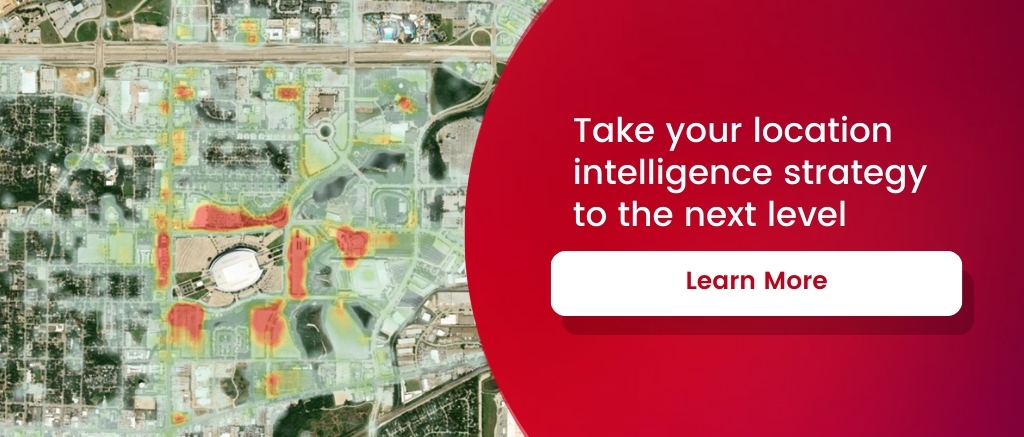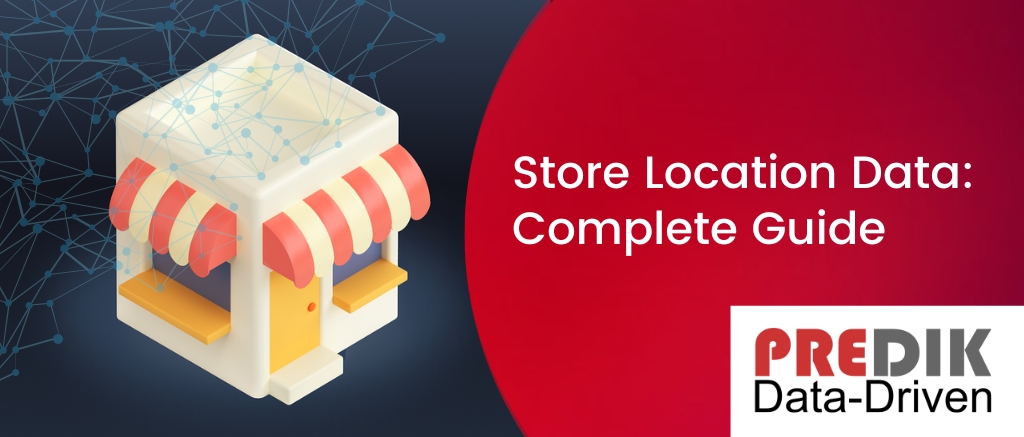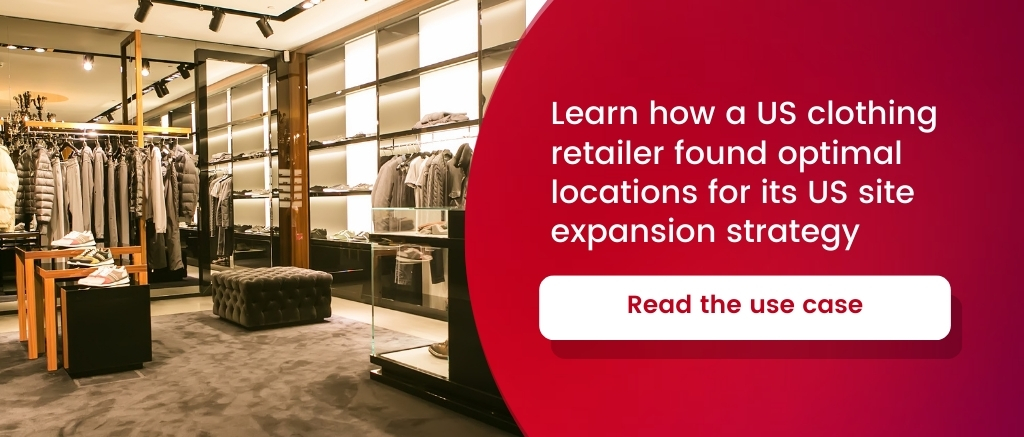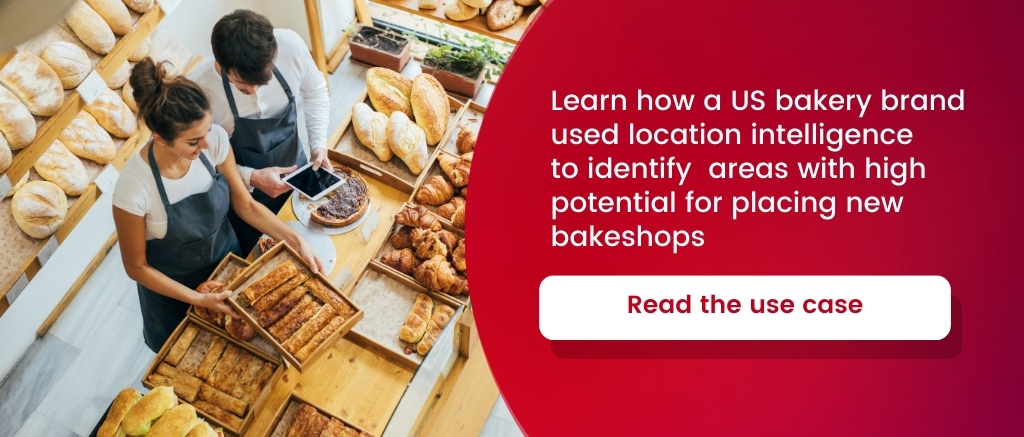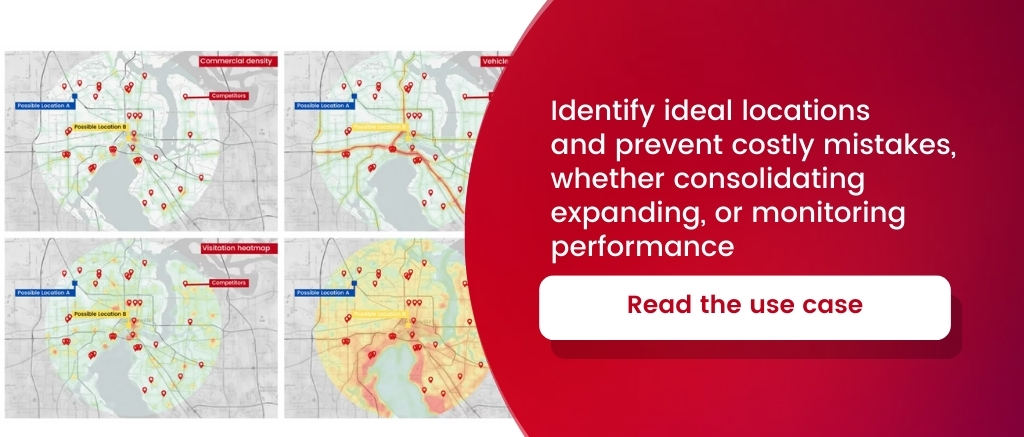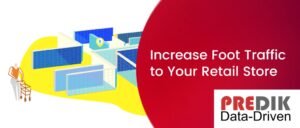Store location data refers to detailed information that can identify and describe the physical location of non-residential buildings such as retail stores, commercial establishments, and businesses.
This data has become essential for companies, investors, and business analysts to make strategic decisions such as market analysis, optimization of store placement, site selection, and crafting personalized services that cater to customers’ geographical distribution.
Also, in today’s rapidly changing industries like retail, it is crucial to have access to the latest information on store locations for better location intelligence. Decision-makers must keep track of factors like inventory, pricing, operating hours, and store locations to make informed decisions based on current market conditions. Accurate and timely information on these elements is essential for businesses to stay ahead of the competition and succeed in a demanding environment.
In this guide we will cover the following topics:
- How does location data work?
- How can different industries use store location data?
- How are other companies using store and business location data?
- Where to get reliable store location data?
- Main challenges and considerations when using store location data
- Best practices to follow
- Start using store location data for making better business decisions
How does location data work?
The core of store location data is the geographic coordinates (latitude and longitude) that pinpoint a store’s precise location. However, it extends beyond mere location to include detailed information that reflects a business’s characteristics and operations, like an address.
Furthermore, store location data integrates with broader geospatial information systems and data types, such as Point of Interest (POI) data, mobility data, demographic insights, imagery, and proprietary information. This enriches its value by including context about the surrounding environment and other nearby POIs.
After all, proper integration allows for advanced analytics, such as foot traffic analysis, competitive analysis, and market trend forecasting.
How can different industries use store location data?
Store location data can be helpful in multiple industries, from retail to food-oriented businesses and real estate planners.
Store location data for retail stores
Retailers can benefit greatly by better understanding the movement and patterns of shoppers both inside and outside their stores. This knowledge can help them attract more customers, create layouts that improve the in-store experience, and optimize their supply chain efficiencies.
As well, retail brands can improve their commercial logistic strategies and marketing efforts by analyzing data on which other brands customers visit. Additionally, by examining where customers live and work, retailers can identify the best locations to promote products and open new stores.
Retailers can also perform in-depth competitive intelligence and retail analytics using store location data.
We recommend you reading: Retail Site Selection Guide: Using Big Data For Better Strategies
Store location data for commercial real estate investors and developers
Commercial real estate developers can make informed investment decisions for their “next big project” by leveraging the store location data of existing locations.
These insights help decision-makers build more accurate projections for capacity and revenue for their new development. It also benefits property management by enabling them to predict tenant renewals and plan for parking capacity and efficient facility services based on ongoing store location data.
Store location data for restaurants
Restaurant chains and QSR can use store location data for market research and expansion. For example, by combining this information with POI and mobility data, quick-service restaurants can find locations that see significant foot traffic and fit target demographics while also evaluating nearby competitors’ presence (and performance).
Restaurant chains and quick-service restaurants (QSRs) can use store location data for market research and expansion purposes. For example, by combining this data with points of interest (POI) and mobility data, QSRs can identify ideal locations that attract significant foot traffic and cater to the target demographics. This approach also helps evaluate competitors’ presence (and performance) in nearby areas.
“Quick-service restaurants can use location data to improve site selection, analyze rivals and boost their competitive advantage.”
QSR
This business location data can also improve the performance of any expansion strategy plans.
How are other companies using store and business location data?
Conducting better trade area analysis
Storing location data enables businesses to explore and analyze the commercial situation of a particular trade area. This analysis helps recognize the growing types of businesses and where some uncovered market opportunities exist.
By understanding the current commercial offer, companies can make safer decisions about entering new markets or expanding into existing ones.
Improve site selection strategies
Store and business location data is not only useful in determining the most suitable locations for launching new stores with higher probability of customer attraction. It also helps identify overcompetitive areas, enabling businesses to avoid saturated locations.
Understanding customer demographics
By combining store location data with transactional, socioeconomic, and foot traffic data, businesses can create detailed profiles of their customer demographics. Getting in-depth insights into customers’ profiles, preferences, and lifestyles helps organizations strengthen their operations and improve product offerings and marketing strategies.
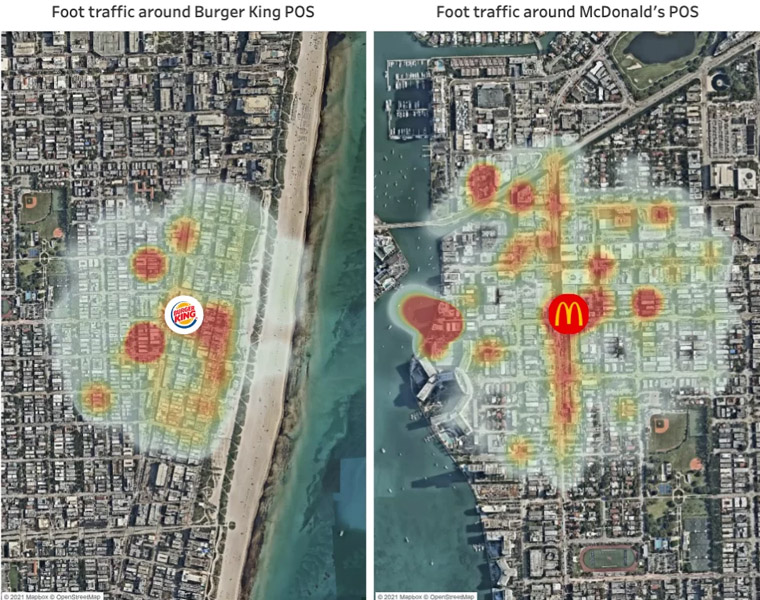
The image shows where their customers (BK and McDonald’s) are coming from.
Take customer and marketing experience to the next level
As mentioned, this data type helps businesses simplify and improve in-store and out-store navigation and overall store experience. Additionally, location-based marketing can entice new potential customers and drive more visitors.
Where to get reliable store location data?
Store location datasets can be complex and robust. Some can be based on GPS, WiFi technology, beacons, or geofencing methods. That is why getting data from reliable sources is essential to obtain high-value insights.
Specialized Data Providers
Data providers are the best sources for accessing quality store and business data. Data analytics and business intelligence companies offer customizable, comprehensive datasets.
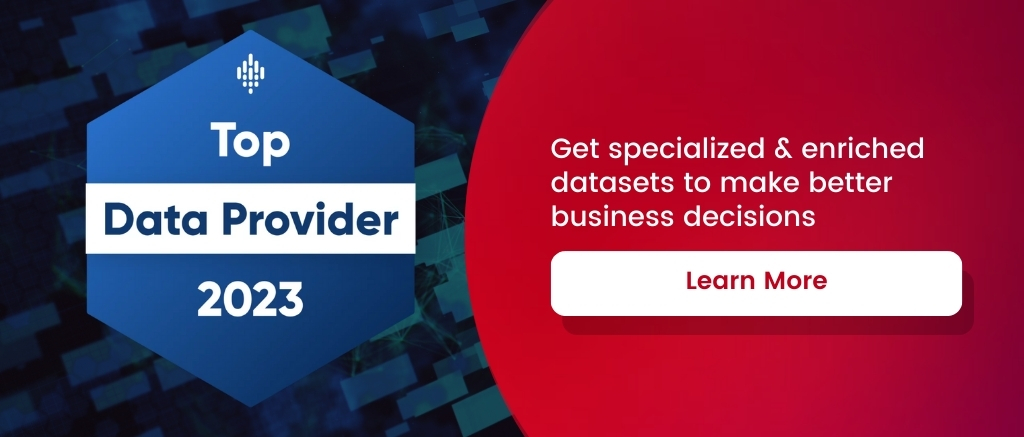
Government Databases
Government publicly available data on businesses, including their locations, can be reliable sources of information. (Just consider that their information can not be updated or available in certain countries.)
Social Platforms
Other interesting data sources include Google Maps, Yelp, and Facebook. These social media channels provide businesses’ location data, which can be accessed through their respective APIs.
Market Research Firms
Some market research firms conduct studies that include store data. Like government databases, these reports may not be updated or have a limited analysis scope.
Main challenges and considerations when using store location data
Utilizing store location data shows two main challenges for businesses: Getting relevant data and complying with privacy policies.
On the one hand, your store location data’s accuracy and relevancy are critical. Outdated information can lead to erroneous conclusions and missed opportunities. According to your business requirements, data will require regular updates (For example, some retailers need monthly or even weekly updates).
On the other hand, organizations must always consider privacy laws like CCPA and GDPR when getting user data. For example, PREDIK Data-Driven always uses anonymized information that complies with international privacy and user protection laws.
Best practices to follow
Many teams struggle to make sense of this type of business data. Why? They lack a clear vision and objectives and do not have the right tools to conduct proper analysis.
Have a clear goal, strategy, and scope for this data. You can do many things using store data, so you need to identify and focus on the specific objective, use cases, and need you want to target.
Get the right tech, personnel, and tools. Using complex datasets requires using specific data team, technology based on Machine Learning, Big Data, and visualizing tools. As Unacast menstions, it is crucial to ensure using ethically sources data.
If your current organization does not have the technical requirements or the necessary know-how, we can help you build a solid data-driven strategy.
Start using store location data for making better business decisions
Whether planning your next site selection project or trying to get an edge on your competitors, store location data plays a critical role in modern business decision-making for most industries.
Are you having trouble knowing how to start or take your current data strategy to the next level? At PREDIK Data-Driven, we can help you plan how to leverage location intelligence data for your business best.
